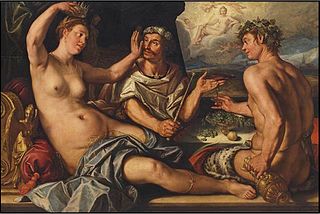 W
WApame was first mentioned in 1 Esdras 4:29Yet I have seen him with Apame, the king's concubine, the daughter of the illustrious Bartacus; she would sit at the king's right hand
 W
WConsort Ban, or Ban Jieyu, also known as Lady Ban (Pan), was a Chinese scholar and poet during the Western Han Dynasty. Jieyu (婕妤) was a title for a third-rank palace lady, one rank below the Zhaoyi and two ranks below the Empresss. Her personal name is not known.
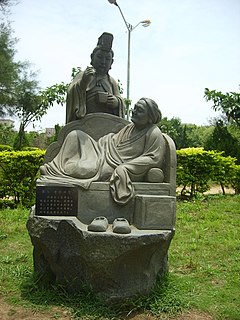 W
WEmpress Dowager Bo (薄太后) was an imperial concubine of Emperor Gaozu of Han. She was also known as Consort Bo (薄姬) during the life of the Emperor, and more formally as either Empress Dowager Xiaowen (孝文太后) or (rarer) Empress Gao (高皇后). Despite being a concubine of lower standing, her son, Liu Heng, became Emperor Wen of Han, cementing her place in history. The year of her birth is not known. She died in 155 BC.
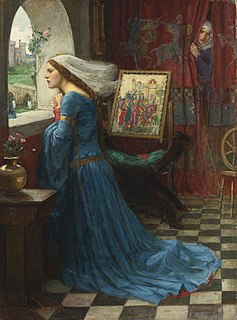 W
WRosamund Clifford, often called "The Fair Rosamund" or the "Rose of the World", was famed for her beauty and was a mistress of King Henry II of England, famous in English folklore.
 W
WCozbi is mentioned in Numbers 25 in the Hebrew Bible as "[the] daughter of Zur", a prominent Midianite, and a wife or concubine of the Israelite Zimri, son of Salu. The Lord objected to the mixing of the Israelite people with the local Midianites, and the resultant worshiping of Baal, and instructed Moses to slay all the Israelites who had worshiped Baal."And behold, one of the people of Israel came and brought a Mid'ianite woman to his family, in the sight of Moses and in the sight of the whole congregation of the people of Israel, while they were weeping at the door of the tent of meeting. When Phin'ehas the son of Elea'zar, son of Aaron the priest, saw it, he rose and left the congregation, and took a spear in his hand and went after the man of Israel into the inner room, and pierced both of them, the man of Israel and the woman, through her body. Thus the plague was stayed from the people of Israel. Nevertheless those that died by the plague were twenty-four thousand." Numbers 25:6–9
 W
WDiaochan was one of the Four Beauties of ancient China. Although based on a minor historical personage, she is mostly a fictional character. She is best known for her role in the 14th-century historical novel Romance of the Three Kingdoms, which romanticises the events in the late Eastern Han dynasty and the Three Kingdoms period. In the novel, she has a romance with the warrior Lü Bu and causes him to betray and kill his foster father, the tyrannical warlord Dong Zhuo. She was praised in tales as woman of uneven beauty who did what no other hero in China was able to accomplish, put an end to Dong Zhuo's regime of terror and the eventual end of Lu Bu; triggering the events that would lead to the formation of the Three kingdoms: Cao Wei, Eastern Wu and Shu Han.
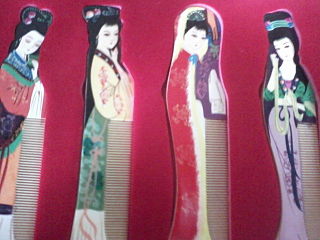 W
WThe Four Beauties or Four Great Beauties are four Chinese women, renowned for their beauty. These were Xi Shi, Wang Zhaojun, Diaochan, and Yang Guifei. The scarcity of historical records concerning them meant that much of what is known of them today has been greatly embellished by legend. They all were said to have in some manner caught the attention of a ruling king or emperor in their respective eras. They gained their reputation from the influence they exercised over kings and emperors and, consequently, the way their actions impacted Chinese history. Three of the Four Beauties brought kingdoms to their knees and their lives ended in tragedy.
 W
WLady Gan was a concubine of Liu Bei, the founding emperor of the state of Shu Han in the Three Kingdoms period of China and Liu Shan's mother. She was later posthumously honoured as Lady Huangsi which means "the Lady whom the Emperor misses" by Liu Bei. Then after his death, she was named Empress Zhaolie by her son to match his father's posthumous title.
 W
WGülnuş Sultan was Haseki Sultan of Ottoman Sultan Mehmed IV and Valide Sultan to their sons Mustafa II and Ahmed III.
 W
WHandan Sultan was the consort of Sultan Mehmed III, and Valide Sultan to their son Sultan Ahmed I.
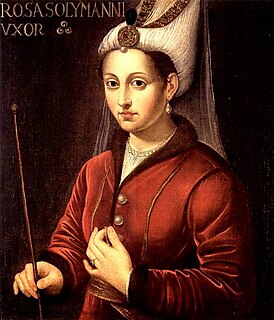 W
WHaseki Sultan was the imperial title used for the chief consort of an Ottoman Sultan. Haseki sultan meant "chief consort" or "single favorite" of the sultan. In later years, the meaning of the title changed to "imperial consort". Hürrem Sultan, principal consort and legal wife of Suleiman the Magnificent, was the first holder of this title. The title lost its exclusivity under Ibrahim I, who bestowed it upon eight consorts simultaneously.
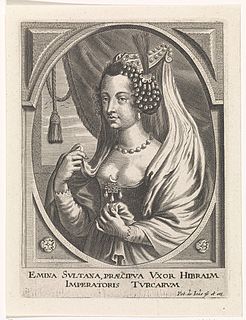 W
WTurhan Sultan, was Haseki Sultan of the Ottoman Sultan Ibrahim and Valide Sultan as the mother of Mehmed IV. Turhan was prominent for the regency of her young son and her building patronage. She and her mother-in-law, Kösem Sultan, are the only two women in Ottoman history to be regarded as official regents and had supreme control over the Ottoman Empire. Turhan herself was the only one in Ottoman history to equally share the power of running the entire empire with Ottoman Sultan legally, although in fact she transferred her political power to the grand vizier. As a result, Turhan became one of the prominent figures during the era known as Sultanate of Women.
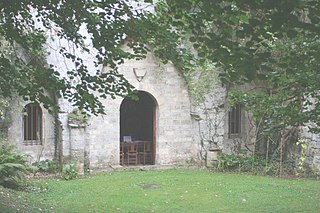 W
WHerleva, also known as Herleve, Arlette, Arletta Arlotte, and Harlette was an 11th century Norman woman known for having been mother of William the Conqueror, born to an extramarital relationship with Robert I, Duke of Normandy, and also of William's prominent half-brothers Odo of Bayeux and Robert, Count of Mortain, born to Herleva's marriage to Herluin de Conteville.
 W
WConsort Xu (徐惠妃) was a concubine of Later Shu's emperor Meng Chang during imperial China's Five Dynasties and Ten Kingdoms period. More commonly known as Madame Huarui (花蕊夫人), she was also a notable poet.
 W
WKeturah was a concubine and wife of the Biblical patriarch Abraham. According to the Book of Genesis, Abraham married Keturah after the death of his first wife, Sarah. Abraham and Keturah had six sons.
 W
WKösem Sultan – also known as Mahpeyker Sultan – was one of the most powerful women in Ottoman history. Kösem Sultan achieved power and influenced the politics of the Ottoman Empire when she became haseki sultan as favourite consort of Ottoman Sultan Ahmed I and valide sultan as mother of Murad IV and Ibrahim, and grandmother of Mehmed IV.
 W
WMahfiruz Hatun was a concubine of Ottoman Sultan Ahmed I and mother of Sultan Osman II.
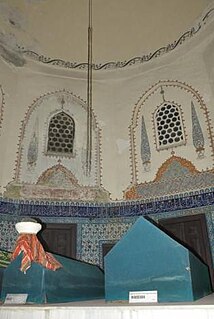 W
WMahidevran was the consort of Suleiman the Magnificent of the Ottoman Empire and the mother of Şehzade Mustafa.
 W
WMihrişah Kadın was a consort of Sultan Ahmed III and the mother of Sultan Mustafa III.
 W
WTora Mosterstong —also known as Thora Mostaff—was one of Harald Fairhair's concubines and the mother of Håkon the Good; Harald Fairhair's youngest son and the third King of Norway.
 W
WThe Imperial Harem of the Ottoman Empire was the Ottoman sultan's harem – composed of the wives, servants, female relatives and the sultan's concubines – occupying a secluded portion (seraglio) of the Ottoman imperial household. This institution played an important social function within the Ottoman court, and wielded considerable political authority in Ottoman affairs, especially during the long period known as the Sultanate of Women. The utmost authority in the Imperial Harem, the valide sultan, ruled over the other women in the household; she was often of slave origin herself.
 W
WThe Rape of the Sabine Women, also known as the Abduction of the Sabine Women or the Kidnapping of the Sabine Women, was an incident in Roman mythology in which the men of Rome committed a mass abduction of young women from the other cities in the region. It has been a frequent subject of artists and sculptors, particularly during the Renaissance and post-Renaissance eras.
 W
WHurrem Sultan, also known as Roxelana, was the chief consort and legal wife of the Ottoman Sultan Suleiman the Magnificent. She became one of the most powerful and influential women in Ottoman history and a prominent and controversial figure during the era known as the Sultanate of Women.
 W
WSafiye Sultan was the Albanian concubine of Murad III and Valide Sultan of the Ottoman Empire as the mother of Mehmed III and the grandmother of Sultans: Ahmed I and Mustafa I. Safiye was also one of the eminent figures during the era known as the Sultanate of Women. She lived in the Ottoman Empire as a courtier during the reigns of seven sultans: Suleiman the Magnificent, Selim II, Murad III, Mehmed III, Ahmed I, Mustafa I, and Osman II.
 W
WŞehsuvar Sultan was a consort to the Ottoman Sultan Mustafa II and Valide Sultan to their son Osman III.
 W
WA seraglio or serail is the sequestered living quarters used by wives and concubines in an Ottoman household. The term harem is a generic term for domestic spaces reserved for women in a Muslim family, which can also refer to the women themselves. The Ottoman Imperial Harem was known in Ottoman Turkish as Harem-i Hümâyûn.
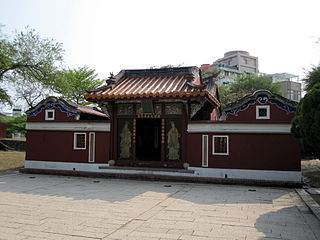 W
WThe Temple of the Five Concubines, known also by alternative names including the Temple of the Five Noble Ladies, is a temple in West Central District, Tainan, Taiwan. It was built in front of the tomb of the five concubines of Zhu Shugui, the Ming Prince of Ningjing, who killed themselves in 1683 to accompany him in death. It is registered as a first-class historic site by the Republic of China government.
 W
WTishyaraksha or Tissarakkhā was the last wife of the third Mauryan emperor, Ashoka. According to the Ashokavadana, she was responsible for blinding Ashoka's son and heir presumptive Kunala. She married Ashoka four years before his death. She was very jealous of the attention paid by Ashoka to the Bodhi-tree, and caused it to be killed by means of poisonous thorns.
 W
WWang Qiang, commonly known by her courtesy name Wang Zhaojun was known as one of the Four Beauties of ancient China. Born in Baoping Village, Zigui County in the Western Han dynasty, she was sent by Emperor Yuan to marry Chanyu Huhanye of the Xiongnu Empire in order to establish friendly relations with the Han dynasty through marriage.
 W
WYanagihara Naruko, also known as Sawarabi no Tsubone, was a Japanese lady-in-waiting of the Imperial House of Japan. A concubine of Emperor Meiji, she was the mother of Emperor Taishō and the last concubine to have given birth to a reigning Japanese emperor.
 W
WYang Yuhuan, often known as Yang Guifei, known briefly by the Taoist nun name Taizhen (太真),. She was the beloved consort of Emperor Xuanzong of Tang during his later years. She is known as one of the Four Beauties of ancient China.
 W
WYodo-dono (淀殿) or Yodogimi (淀君) was a prominently placed figure in late-Sengoku period. She was the daughter of Oichi and sister of Ohatsu and Oeyo. She was a concubine and second wife of Toyotomi Hideyoshi, who was then the most powerful man in Japan. She also became the mother of his son and successor, Hideyori. Her time period being that of large turmoil and overhaul, Yodo-dono had an interest toward both politics and administration. She actively acted in the restoration of the Toyotomi clan after the fall of the Council of Five Elders, as Hideyori's guardian. Alongside her son, Yodo-dono led the last anti-Tokugawa shogunate resistance in the Siege of Osaka.